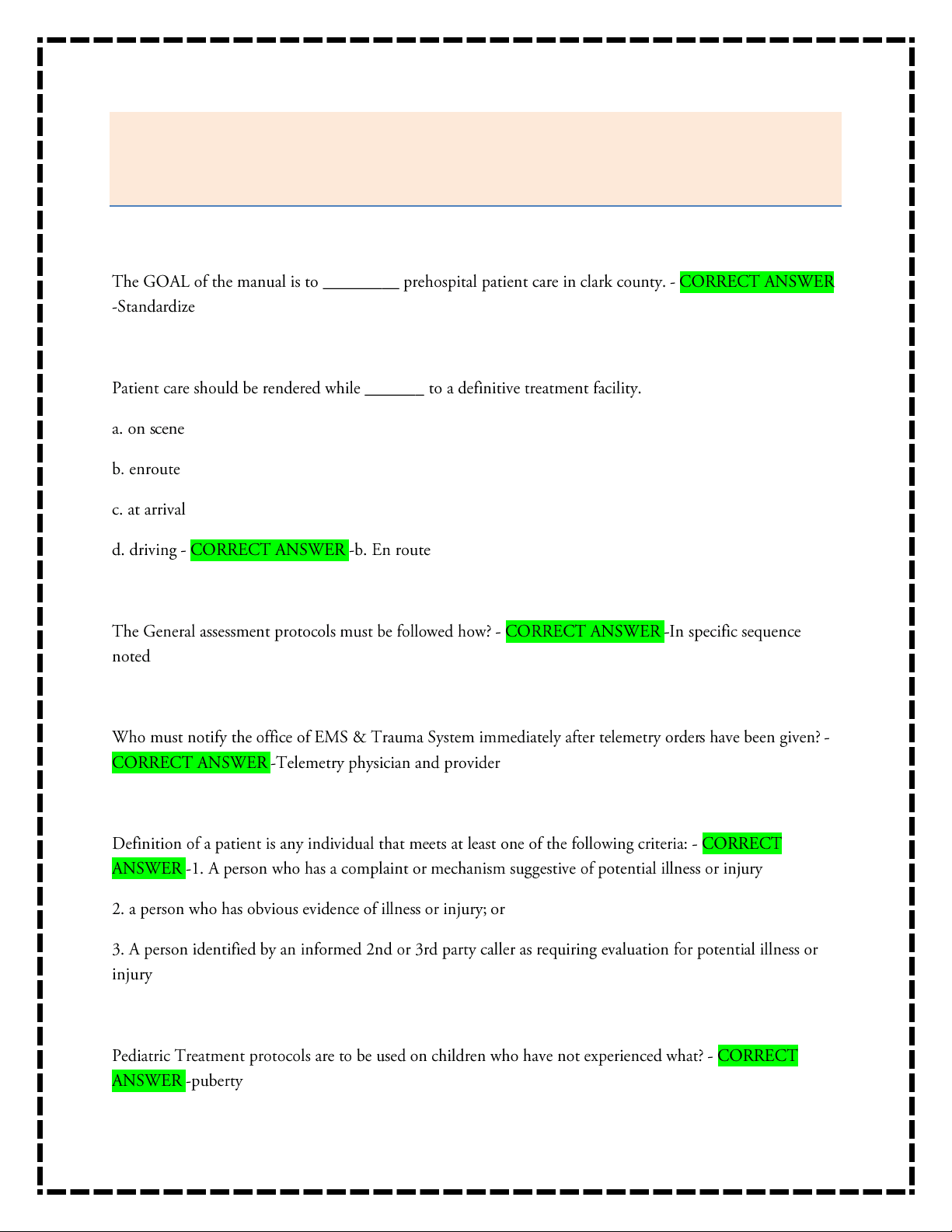
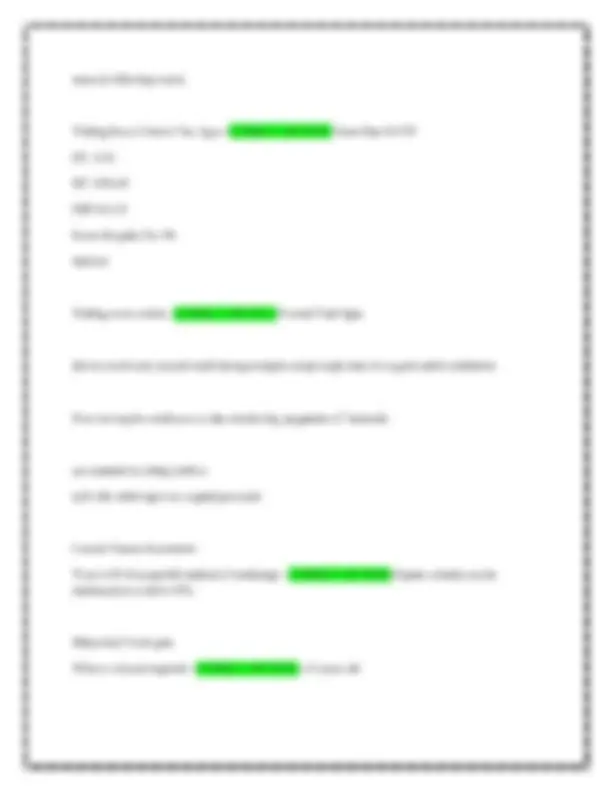
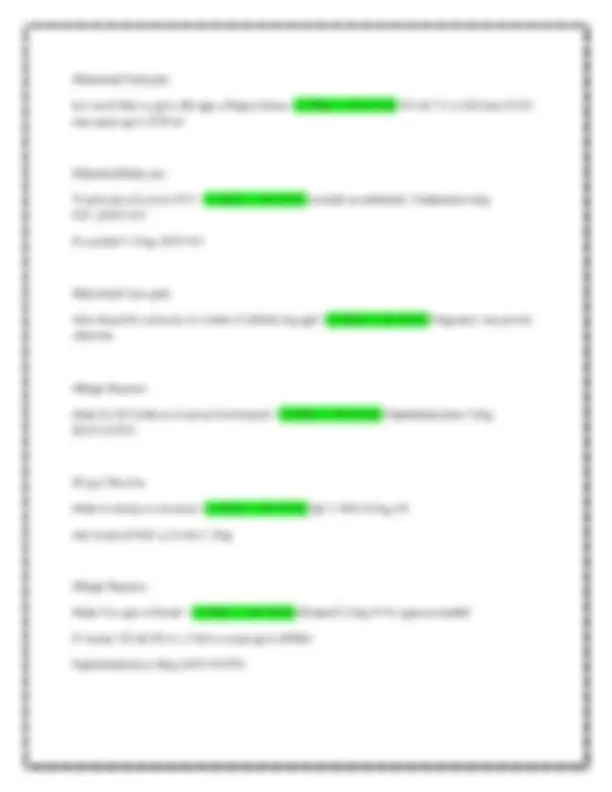
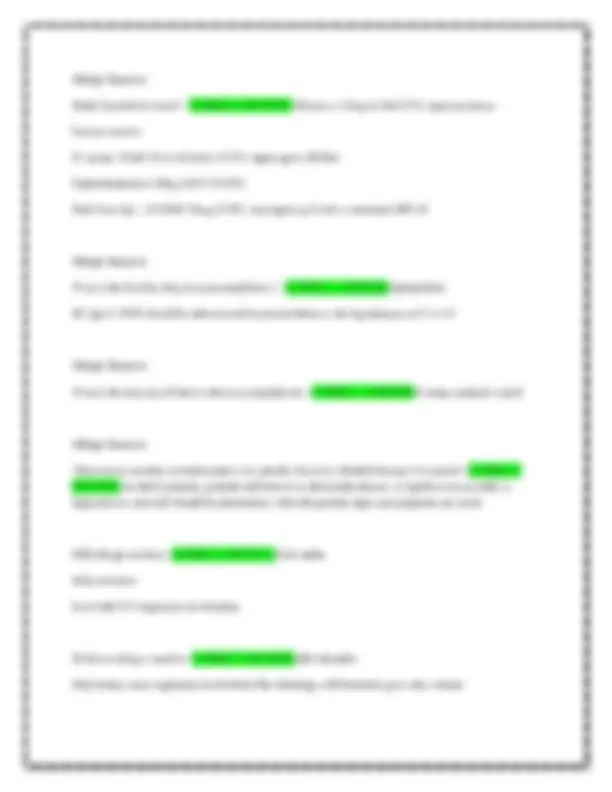
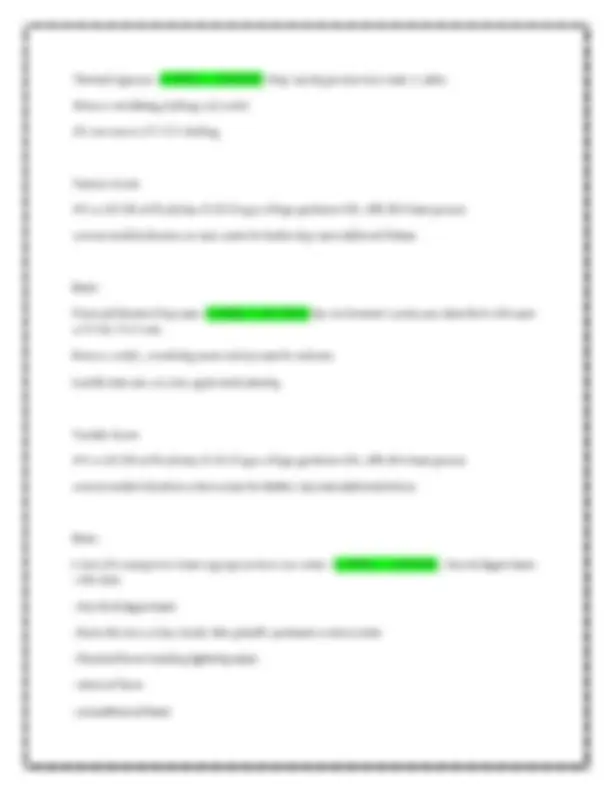
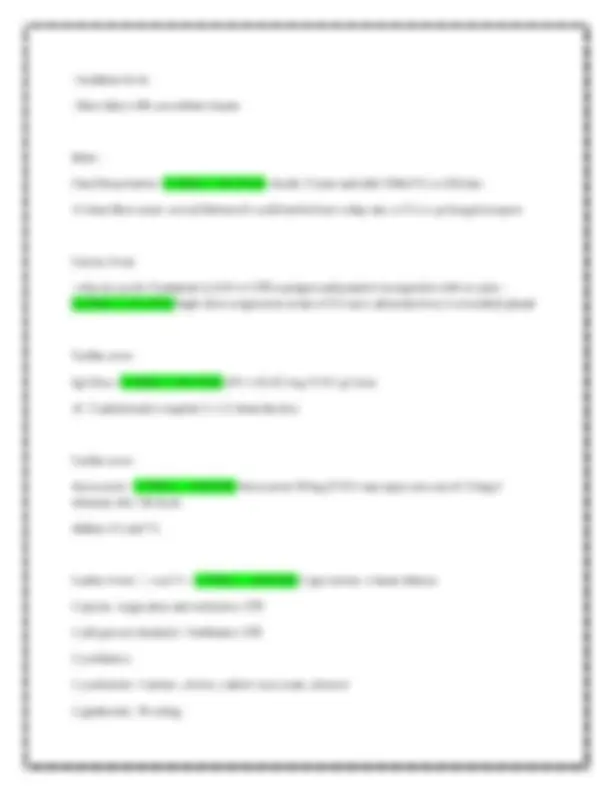
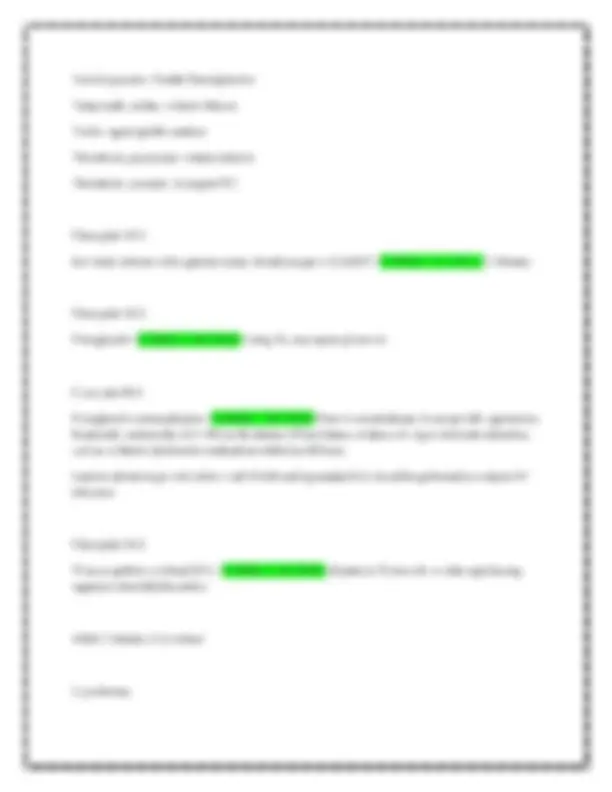
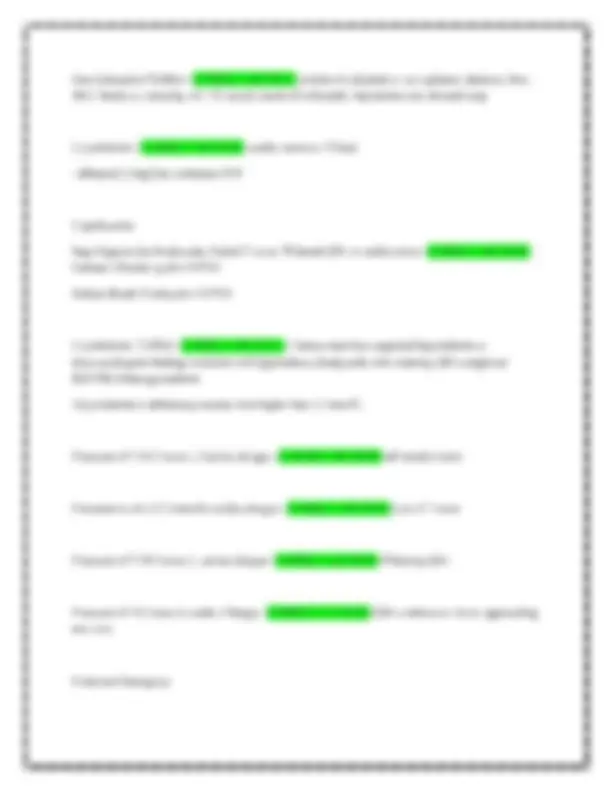
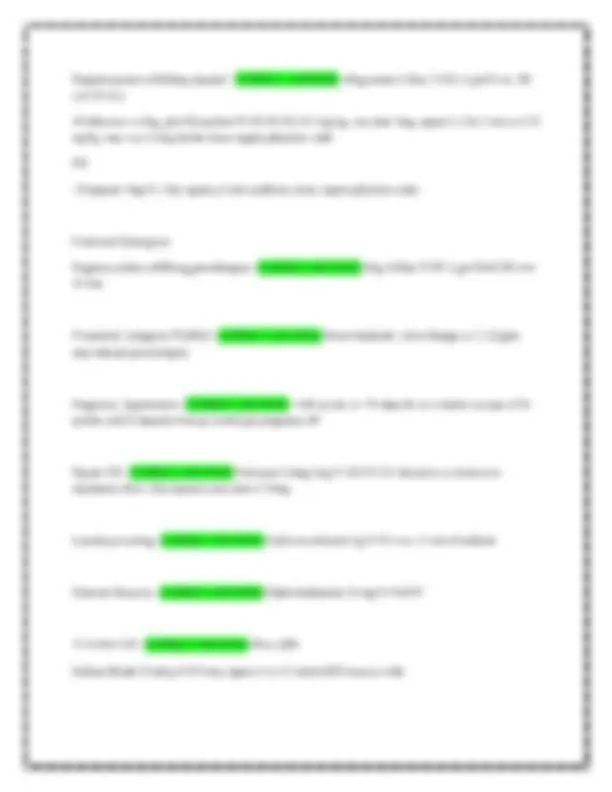
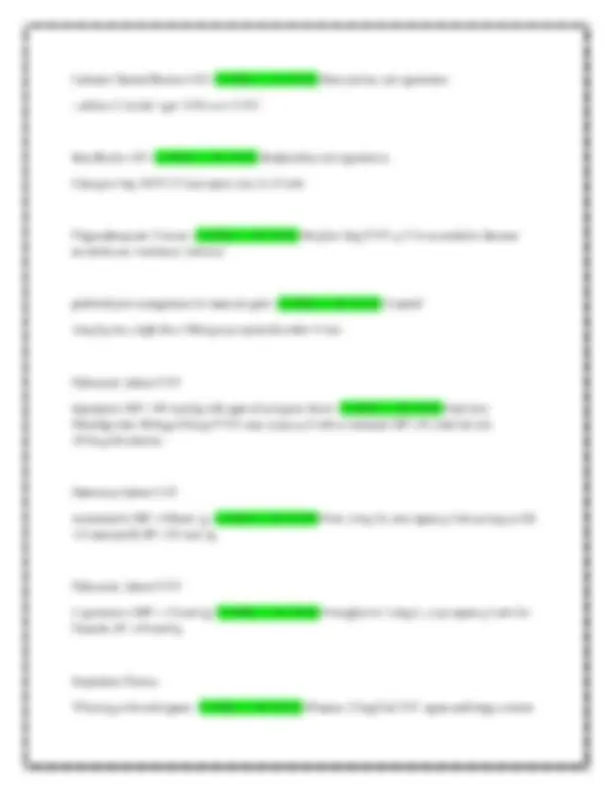
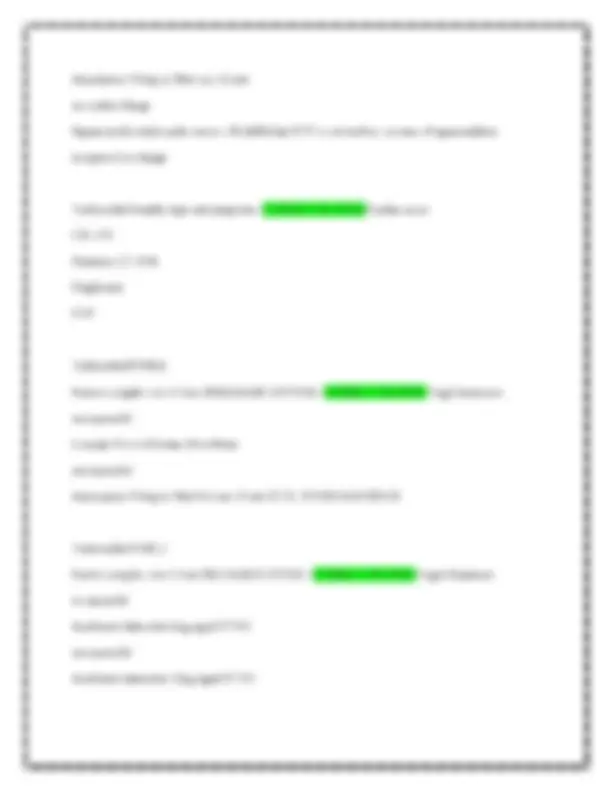
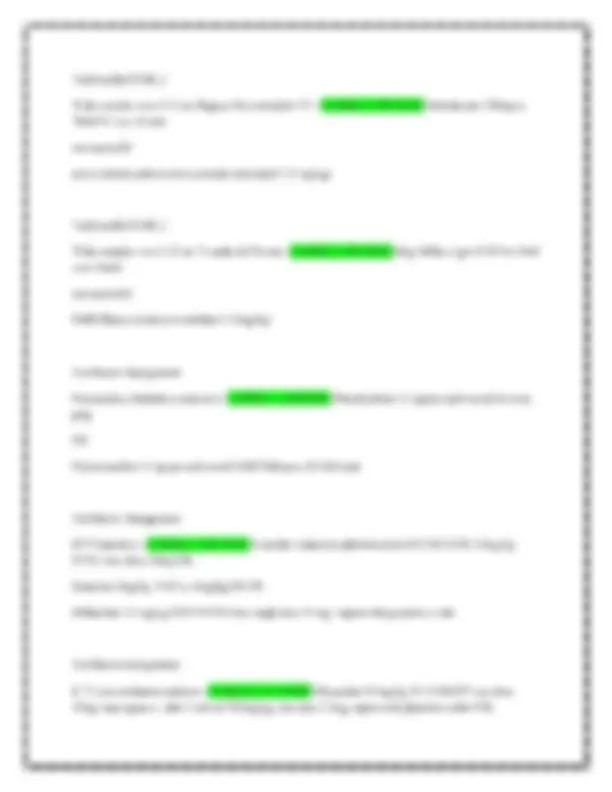
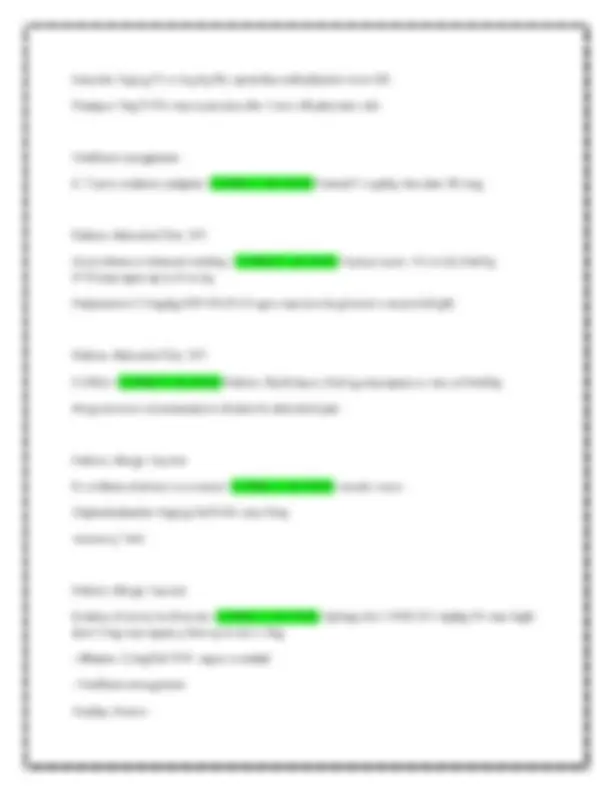
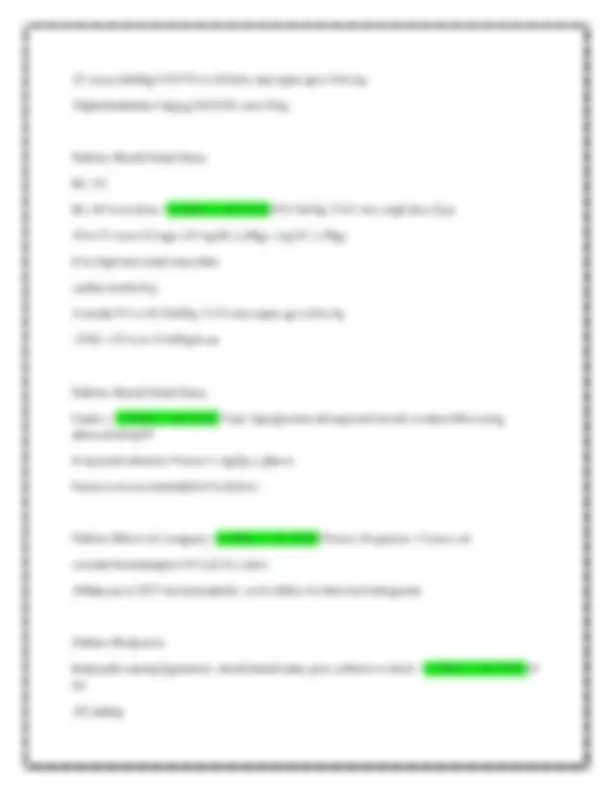
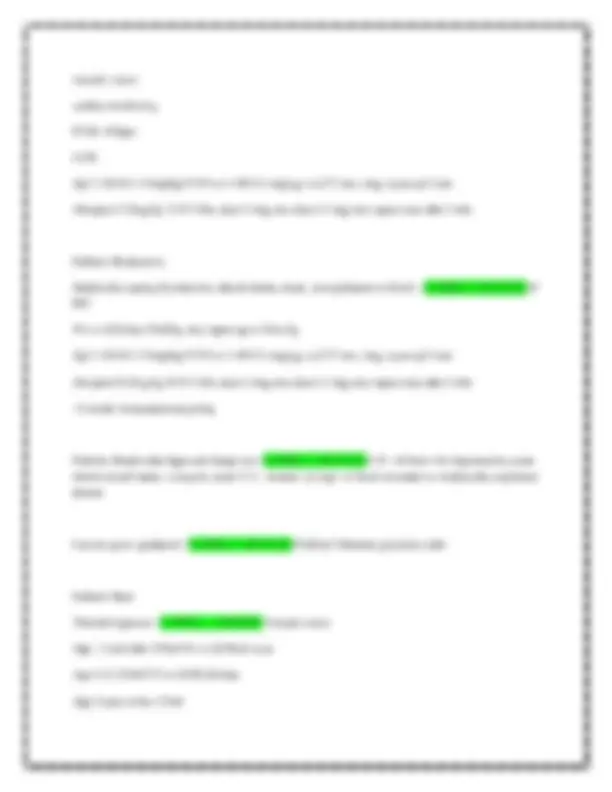
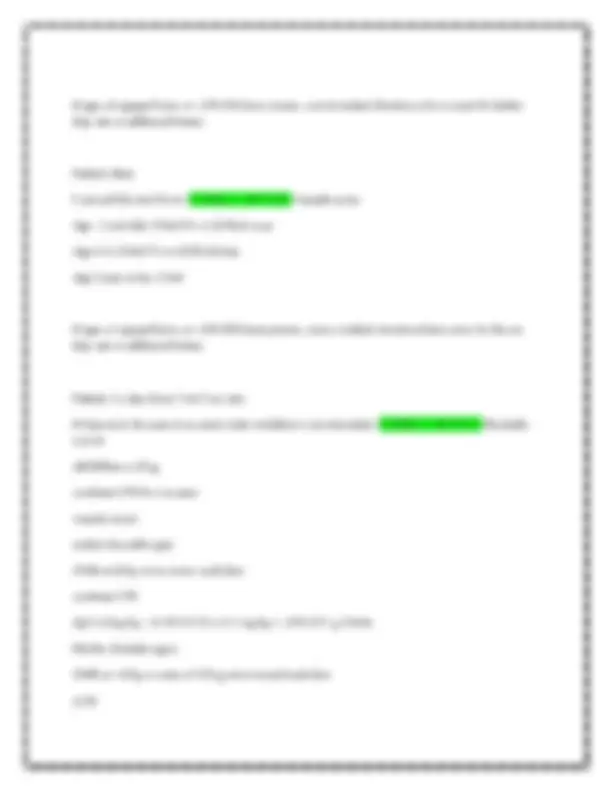
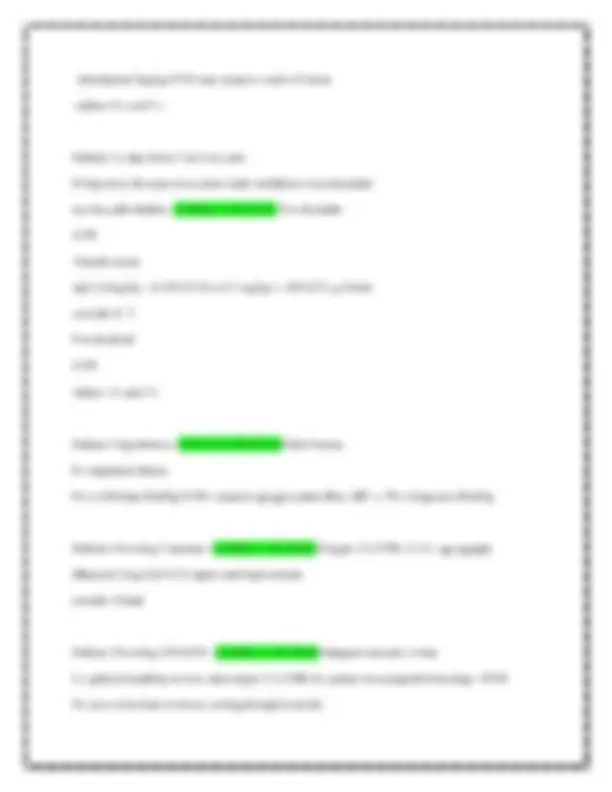
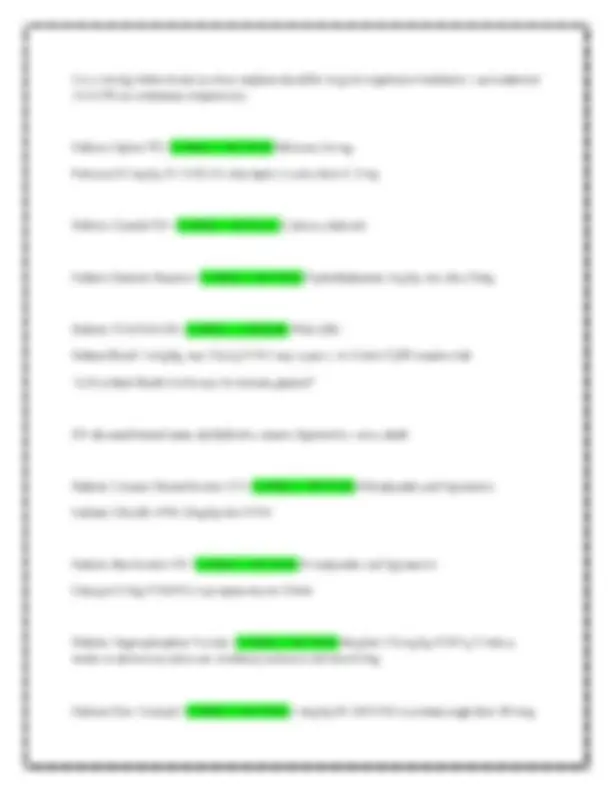
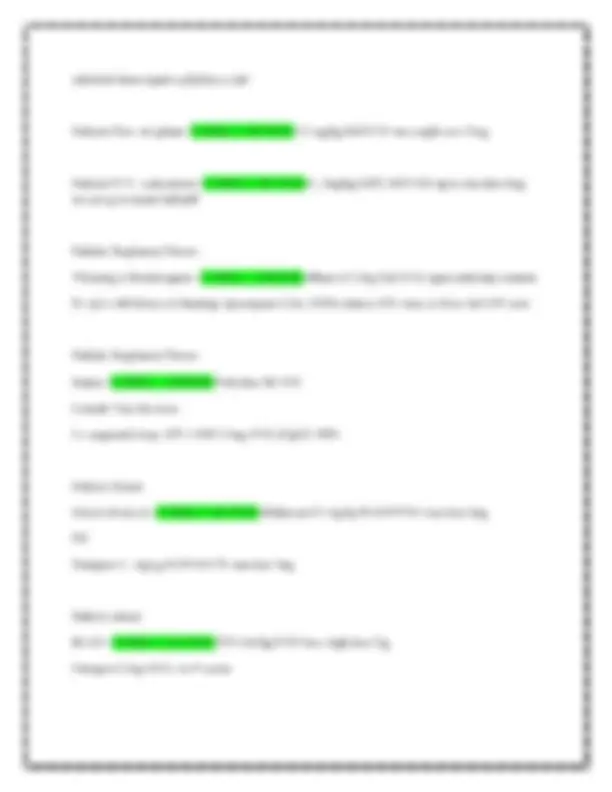
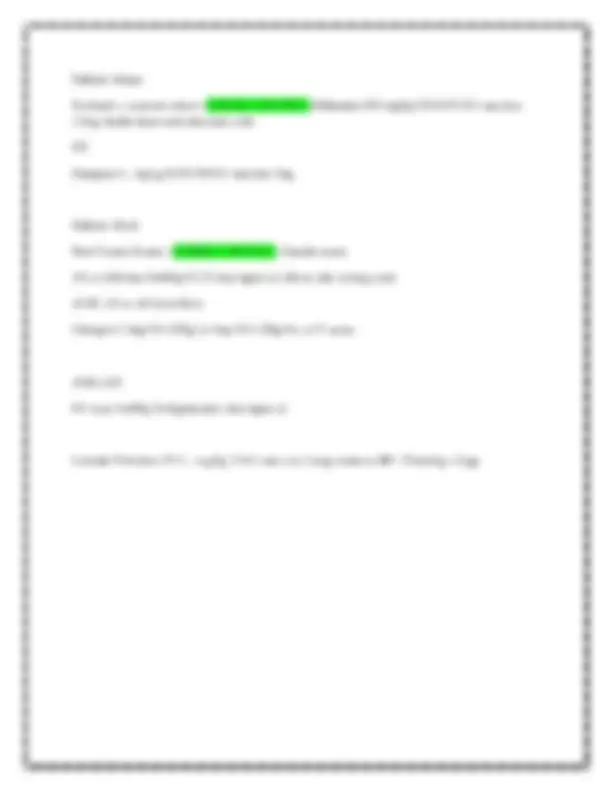


Study with the several resources on Docsity

Earn points by helping other students or get them with a premium plan


Prepare for your exams
Study with the several resources on Docsity

Earn points to download
Earn points by helping other students or get them with a premium plan
Community
Ask the community for help and clear up your study doubts
Discover the best universities in your country according to Docsity users
Free resources
Download our free guides on studying techniques, anxiety management strategies, and thesis advice from Docsity tutors
SNHD Protocol Emergency MedicineSNHD Paramedic Protocols Exams Practice Guide 2025-2026 Emergency Medicine
Typology: Quizzes
1 / 27

This page cannot be seen from the preview
Don't miss anything!




















SNHD Paramedic Protocols Exams Practice Guide 2025-2026 Emergency Medicine
SNHD Paramedic Protocols Exams Practice Guide 2025-2026 Emergency Medicine The GOAL of the manual is to prehospital patient care in clark councy. - @ORREGLANSWER Standardize Patienc care should be rendered while _ to a definitive treatment facility. a. on scene b. enroute c, at arrival d. driving - CORRECT ANSWER-b. En route The General assessment protocols must be followed how? - GORREGIANSWERI-In specific sequence noted Who must notify the office o0f EMS & Trauma System immediately after telemetry orders have been given? - CORRECT ANSWER Telemetry plysician saul provides Definition of a patient is any individual chat meets at least one of the following criteria: - SORRECGD HINSWWERI-1. A person who has a complaint or mechanism suggestive of potential illness or injury 2. a person who has obvious evidence of illness or injury; or 3. A person identified by an informed 2nd or 3rd party caller as requiring evaluation for potential illness or injury Pediatric Treatment protocols are to be used on children who have not experienced whac? - GORRECT ANSWER, pbx For what age do you use the Pediatric Patient Destination protocol? - CORRECT ANSWER -<18 years old When is radio contact needed during adult general assessment ? - CORRECT ANSWER -All trauma patients Code 3 Returns Need for telemetry physician As per protocol When is telephone contact allowed for online medical concrol? - GORRECHANSWER-Only if routed via a recorded phone patch through FAO at 702-382-9007 Sexual assault victims <13 years old shall be transported to? - GORRECTANSWER Sunrise hospital Sexual assaule victimes 13 y/o to 18 y/o shall be transported to? - GORRECTANSWER sunrise Hospital or UMC Sexual assault victims 18 y/o and older shall be transported to? - GORRECTANSWER-UMc Sexual assault victims outside a 50-mile radius from UMC or Sunrise shall be transported where? - CORRECT ANSWER -nearest epprupriace fecility Where shall stable patients be transported? - SGRREGIANSWER!-hospical of choice, if no preference chen closest facility When are patients allowed to be placed in the waiting room? - ((@RREGDANSWER-If transfer of care has not occurred in accordance with NRS 450B.790 excludes patient placed on a legal psych hold Abdominal/Flank pain how much fluid to give with signs of hypovolemia - CORRECT ANSWER -500 ml NS or LR bolus IV/IO; may repeat up to 2000 ml Abdominal/flank pain What to give if there is N/V? - G@RREGTAINGIVER consider an antiemetic: Ondansetron 4mg ODT/IM/TV/IO Droperidol 1.25mg IM/TV/IO Abdominal/ flank pain what should be considered in women of childbearing age? - GORRECTANSWER)-Pregnancy until proven otherwise Allergic Reaction Meds for NO evidence of airway involvement? - GORRECTANS WER D iphenhydramine 50mg IM/TV/TO/PO Allergic Reaction Meds for airway involvement - S@RREGIANSIVERE Epi 1:1000, 0.5mg IM may repeat q15min up to max 1.5mg Allergic Reaction Meds if no signs of shock? - GORRECTENSWER.Albucerol 2.5mg SVN, repeat as needed IV access- 500 ml NS or LR bolus; repeat up to 2000ml Diphenhydramine 50mg IM/IV/IO/PO Allergic Reaction Meds if patient in Shock? - GORRECTENGWERAlbucerol 2.5mg in 3ml SVN, repeat as needed Cardiac monitor IV access- 500ml NS or LR bolus IV/IO; repeat up to 2000ml Diphenhydramine 50mg IM/IV/IO/PO Push Dose Epi 1:100,000 10meg IV/IO, may repeat q 2-5min to maintain SBP>90 Allergic Reaction What is the first-line drug in acute anaphylaxis ? - SORRECTANSWER-Epinephrine. IM Epi (1:1000) should be administered in priority before or during attempts at IV or IO Allergic Reaction What is the next step if there is refractory anaphylaxis? - GORRECGIANSWERL Contact medical control Allergic Reaction There are no absolute contraindications to episodes, but when should it be used in caution? - CORRECT ANSWER -In elderly patients, patients with known cardiovascular disease, or significant tachycardia or hypertension, and only should be administered when the patients signs and symptoms are severe Mild allergic reaction - CORRECT ANSWER -Skin rashes itchy sensation hives with NO respiratory involvement Moderate allergic reaction - CORRECT ANSWER -skin disorders May include some respiratory involvement like wheezing - still maintains good tidal volume Bradycardia HR <50 bpm & any of the following: 1. hypoperfusion 2. AMS 3. Signs of shock - GORRECIANS WER Atropine Img IV/IO; may repeat q 3-Smin; max dose 3mg Refractory bradycardia - Transcutaneous Pacing Failure to capture - Push dose EPI 10mcg IV/IO may repeat q 2-5 min to maintain SBP >90 Consider Glucagon 1mg IV/IO for patients on beta blockers Consider Calcium Chloride 1 g IV/IO for patients on calcium channel blockers Bradycardia Acute coronary syndrome suspected - GORRECTANGSWER Signs of hypotension, AMS, Shock - consider Transcutaneous pacing Consider - Atropine 1 mg IV/IO may repeat q3-5 min; max dose 3mg Bradycardia What to not delay waiting for IV access? - GORRECTNSWER Pacing Braydycardia ‘Whar is a common cause of bradycardia? - SQRRINGIINSAUIRL-bypoxemia, Re sure to oxygenate the patient and provide ventilator support as needed Burns ‘Thermal Exposure - SORRENSINGWWER cop burning process with water or saline -Remove smoldering clothing and jewelry -Do not remove STUCK clothing Vascular Access -NS or LR 500 mi fluid bolus IV/IO if signs of hypo perfusion OR >20% BSA burn present -contact medical direction at burn center for further drip rates/additional boluses Burns CORRECT ANSWER -Eye involvement? continuous saline flush with water Chemical/Electrical Exposure or NS for 10-15 min Remove jewelry, constricting items and exposure burned area identify encry and exit sites, apply sterile dressing Vascular Access -NS or LR 500 mi fluid bolus IV/IO if signs of hypo perfusion OR >20% BSA burn present -contact medical direction at burn center for further drip rates/additional boluses Burns Criteria for teanspozt wo closest appropriate burn care center - (SORREGIANSWERE Second degree burns >10% BSA - Any third degree burns - Burns that involve face, hands, feet, genetilia, perineum or major joints - Electrical burns including lightning injury - chemical burns - circumferential burns Tension pneumo - Needle Decompression Tamponade, cardiac - volume infusion Toxins - agent specific antidote Thrombosis, pulmonary - volume infusion Thrombosis, coronary - Emergent PCI Chest pain/ ACS how many minutes within patient contact should you get a 12 LEAD? CORRECT ANSWER -5 Minutes Chest pain/ ACS Nitroglycerin - GORRECTENGWER 04mg SL; may repeat q5 min x2 Chest pain/ACS Nicroglycerin contraindication - GORRECTANSWERL Nitro is contraindicated in any pt with hypotension, bradycardia, tachycardia (HR>100) in the absence of heart failure, evidence of a right ventricular infarction, and use of elective dysfunction medications within last 48 hours. Caution advised in pes with inferior wall STEMI and right-sided ECG should be performed to evaluate RV infarction Chest pain/ ACS When to perform a 12-lead ECG - CORRECT ANSWER -all patients 35 years old or older experiencing vague jaw/chest/abd discomfort within 5 minutes of pt contact Hypothermia Steps 10 take if pulse is present in systemic hypothermia - QORMECINSINGWER-Accive warming measure -Vascular access -Cardiac monitor -NS or LR bolus; 500ml IV/IO; repeat to effect SBP >90; max 2000 ml Hypothermia What is active warming consist of - CORRECT ANSWER --hor packs that can be used. in armpit and groin (dont place directly on skin) -Warm saline or lactated ringers may be used Mild hypothermia - CORRECTANSWER90-95 Degrees F Moderate hypothermia - SORREGHIANSWER 82.90 Degsees F Severe hypothermia - (SQRREGIANSWER! <82 Degrees F Drowning Steps for drowing patient - GORRECTANGWERL Oxygen 15L NRB -Spo2 & Capnography -Albuceral 2.5mg/3ml SVN, repeat until improvement - Consider NIPPV - Consider 12 lead Drowning CAVEATS: - GORREGIANSAVERI-1. Adequate ventilation is key 2. for patients breaching on their own, start oxygen 15 L NRB; for patients not adequately breathing > BVM Heat Exhaustion PEARLS - GORRESTANSWER-consisis of dehydration, sale depletion, dizziness, fever, AMS, headache, cramping, n/v. VS usually consist of tachycardia, hypotension and elevated temp Hyperkalemia - GORRECTANSWERL cardiac monitor; 12-lead - Albuceral 2.5mg/3ml continuous SVN Hyperkalemia Steps if patient has bradycardia, Peaked T waves, Widened QRS, or cardiac arrest - GORRECHANSWERI- Calcium Chloride 1g slow IVP/IO Sodium Bicarb 50 mEq slow IVP/IO Hyperkalemia PEARLS - GQRREGIVANS WIRY -Parients must have suspected hyperkalemia or electrocardiogenic findings consistent with hyperkalemia (bradycardia with widening QRS complexes) BEFORE initiating treatment -Hyperkalemia is defined as potassium level higher chan 5.5 mmol/L Potassium of 5.5-6.5 mmol/L Cardiac changes - CORRECT ANSWER -tall tented t waves Potassium m of 6.5-7.5 mmol/L. cardiac changes - G@RREGTHANSWVIRI Loss of P waves Potassium of 7.5-8.5 mmol/L cardiac changes - GORRECTANGWER Widening QRS Potassium of >8.5 mmol/L cardiac Changes - CORRECT ANSWER -QRS continues to widen, approaching sine wave Obstetrical Emergency Pregnant patient exhibiting seizures? - GORRECTANSWER- Magnesium Sulfate IV/IO; 4 gm/50 ml NS over 20 min -If refractory to Mag, give Midazolam TN/TM/TV/TO; 0.1 mg/kg, max dose Smg; repeat x1 after 5 min at 0.05 mg/kg, max dose 2.5mg further doses require physician order OR - Diazepam 5mg IV; May repeat q 5 min additional doses require physician order Obstetrical Emergency Pregnant patient exhibiting pre-eclampsia - GORRECTENSWER Mag Sulfate IV/IO 2 gm/50ml NS over 10 min Obstetrical Emergency PEARLS - CORRECT ANSWER -Severe headaceh, vision changes or RUQ pain may indicate pre-eclampsia Pregnancy Hypertension - G@RREGIMINGIWERI-> 140 systolic or >90 diastolic or a relative inctease of 30 systolic and 20 diastolic from pt normal pre pregnancy BP Opiate OD - GORRECTANS WER Naloxone 0.4mg-2mg IN/IM/IV/IO titrated to an increase in respiratory effort. May repeat to max dose of 10mg Cyanide poisoning - GORREGIANS WER Hydroxocobalamin 5g TV/TO over 15 min if available Dystonic Reaction - GORRECTANSWERL D iphenhydramine 50 mg IV/IM/IO TCA/ASA OD - GORREGIANSWERL Wide QRS Sodium Bicarb 50 mEq IV/IO may repeat x1 in 3-5 minis QRS remains wide Ipratropium 2.5ml 0.02% solution SVN once; or Done 3 ml SVN once consider Mag 2g in 50ml NS over 10min Seizure History of seizures - medication - GORRECTANSWER Midazolam 0.1 mg/kg max dose S5mg OR diazepam 5mg TM/TV/TO Seizure Persistant (status) or recurrent Seizure - GORRECTANSWERL Glucose Test Ventilation management Vascular Access Cardiac monitor Midazolam 0.05mg/kg; max dose 2.5mg - further doses need physician order OR diazepam 5mg IM/TV/IO Sepsis Does the patient have a known or suspected source of infection AND TWO of the following criteria - CORREGHANSWER. sb? <90 mmtic > 90/min RR >20 AMS Temp > or = 100.4F or < or = 96.8F Persistent EtCo2 <25 on waveform capnography Sepsis treatment - CORRECT ANSWER -NS or LR bolus 500 ml IV/IO, reassess criteria and reexamine. may repeat x3 for SBP <90, wich no rales on lung exam. Max dose 2000ml. If SBP <90 after 2000ml IV fluid - push dose Epi 1:100,000 10mcg IV/IO, may repeat q2-5min to maintain SBP >90. OR Push Dose Phenylephrine 100-200meg IV/IO, may repeat q2-5min to maintain SBP >90 Tachycardia/unstable Narrow complex